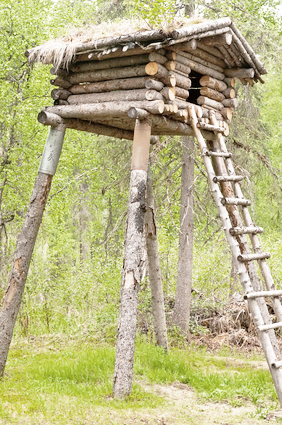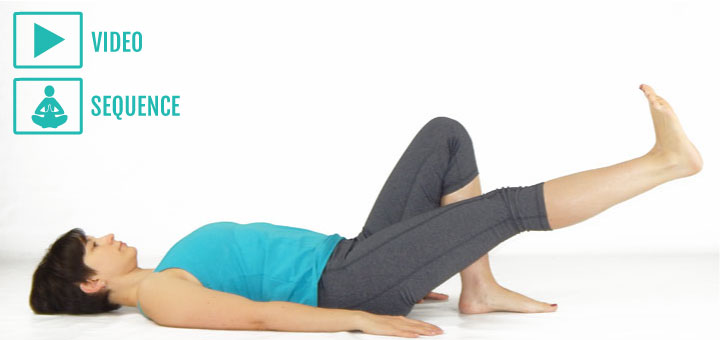Why do we get hip pain and what can we do about it?

When you look at the structure of the hip joint, it becomes clear that it was designed to withstand some serious forces. The head of the femur (thigh bone) is embedded deeply in the acetabulum (hip socket) and is linked to it by the complex web of ligaments and muscles. If the hip was meant to be stable and strong, how come we have so many incidents of hip pain?
- Some hip problems are a direct result of an injury or accident, like a car accident or a bad fall. One can also get an injury from a vigorous or inappropriate yoga practice.
- Sometimes hip pain is due to congenital (from birth) abnormalities in the shape or function of the hip joint (for example, untreated hip dysplasia might lead to problems later in life)
- The pain can be attributed to degenerative changes in the joint (for example, osteoarthritis, which means that the cartilage that surrounds the head of the femur breaks down, causing pain, swelling, and deformity).

- But most often, hip pain is the result of cumulative stress due to more subtle patterns of everyday body use.
Those seemingly insignificant patterns of movement, like sitting with one leg crossed over another, driving around with a wallet in a back pocket, or carrying a baby on one hip, can literally come back and bite you in the butt, causing pain in the hips, buttocks, back and knees. Why do they create all those problems, and what can we do about them? Let’s investigate.
First, let’s examine the pelvis. It’s a fascinating structure that links the upper and lower body. It serves as a platform, supporting the weight of the spine, head, and shoulder girdle above, and a fulcrum, giving the spine the necessary leverage to remain upright. Without it, we would still be running around on all fours.
From below, this platform of the pelvis is supported by two columns, the legs. Imagine for a moment a house on stilts. You will need at least four stilts for adequate support. If something happens to one of those stilts and stops supporting its fair share of weight, it will cause major changes in the entire structure. The house might begin to sag, form cracks, and overall become less stable.
Our skeletal structure works the same way, except we have two stilts (legs) instead of four. The job of the pelvis is to transfer the weight of the structures above (head, spine, ribcage, and their contents) into the earth. This transfer happens via the hip joints and the bones and joints of the legs, which makes those joints weight-bearing. If either one of those joints becomes misaligned, the entire structure becomes destabilized.
Why would your joints get out of alignment? Because tight muscles pull bones out of place. If you consistently do some sort of asymmetrical activity that causes the muscles on one side of your body to tighten up, over time, the tight muscles can change the alignment of the bones.
Let’s take a look at a seemingly innocent habit of sitting with one foot tucked under.

- The right shoulder is elevated (as a result of pelvis displacement)
- The lumbar spine pulls to the right
- The right hip is displaced slightly forward
- The right hip is externally rotated, which pulls on the hip rotators
- The right foot is placed underneath the left thigh, which elevates the pelvis on the left side, contracting the muscles that elevate the left hip
This pattern of sitting puts your pelvis into a tipped and torqued position.
Do it enough times, and your body will reorganize itself, forming a new structural pattern. Once this pattern is formed, other muscles will weaken or tighten to accommodate this “new normal”, to make sure that you are able to remain upright and move around.

Any asymmetrical activity or body positioning that you do regularly for an extended period of time can cause muscular imbalance and, over time, pull your bones out of alignment.
If the pattern of movement remains uncorrected for a long time, it will affect the pattern of movement within the joint itself. The head of the femur will change its position within the socket, and the trajectory of movement will be altered. As a result, it might begin to rub and grind the areas of the hip socket that are not equipped to handle it. Over time, this can lead to deterioration of the cartilage. This is the kind of stuff that contributes to degenerative changes that we’ve discussed earlier.
Pain is just an indicator that something is not right and can become a chronic problem if the movement pattern is not addressed.
What can we do about it?
First, we need to identify the movement pattern(s) that’s causing the problem or contributing to it. Any type of asymmetrical activity is suspect here. What makes things more complicated is that sometimes the activity happened a long time ago, but the dysfunctional patterns of movement were never resolved. I had a student once who, at the age of 60, was concerned that her hips felt and behaved very differently. It turned out that when she was a teenager, she had to wear a cast on her right leg for a few months, which caused her to develop a pattern of swinging the right leg out and around when she walked. Since this pattern was never explored or corrected, even after 40 years, she still did something similar when she walked. It is not easy to change a pattern that you’ve been reinforcing for 40 years.
Once you’ve identified the dysfunctional movement pattern, you will need to eliminate or change it. For example, if you are in a habit of favoring one leg while standing, try to remember to switch sides.
Then, it’s time to investigate which movement relationships are compromised. Before you embark on correcting the imbalances, you need to find out what those imbalances are. They can show up in any of the following movements:

In addition, one side of the pelvis might be higher than the other (“hiked hip”) or displaced forward more than the other. There are certain poses that you can do to assess the asymmetries in your hips; here is an example of an exploratory practice for hip assessment. Keep in mind that the painful hip is not necessarily the problem. The painful hip might be compensating for the asymmetry or imbalance on the other side. We have to keep our eyes and minds open when we do the exploration.
Once you identify the type of motion(s) that’s problematic, you can begin to work with it in your yoga practice. Your goals will be to release chronic tension, strengthen what’s weak, and increase your range of motion.
As you begin the investigative journey of your structural alignment (or misalignment), it’s extremely important to continue monitoring the ongoing movement patterns. Being mindful about how we move our bodies seems to be the next step in the evolutionary process.

When our hips feel stiff, stretching them out seems like a good idea, but this is generally not the best course of action. Usually, your hips feel stiff or painful for one of three reasons.















Thank you for this post/series! I cannot wait to see what I learn over the next 6 weeks! I have a chronically misaligned pelvis due to an injury from college (15 years ago) that brought my right hip higher than the left. Despite intense physical therapy then, and ongoing but sporadic therapy now, nothing seems to work to keep my right hip down where it’s supposed to stay. Most exercise seems to exacerbate the problem. I have a ‘hot pelvis’ as I think you’ve recently blogged about, and anything I can learn/do to help get my body back into alignment (and stay there) is most welcome. Thanks again!
Hi Lindsey, sorry to hear about your ongoing struggles. As we begin our investigation, please be very careful since you know that exercise seems to trigger the problem. Please feel free to write to me about your body’s response to the practices and I will try to help you best I can.
Oh boy do i need this. Have been dealing with some major SI joint issue which have decreased the ROM in my hips and have been causing me much discomfort. Waiting with baited breath
Olga, I am a big fan of your website and your sequencebuilder. You make the subject so clear and easy to understand and it’s so beatifully illustrated.
I have the same story as Denise. Now going on my third year. I am waiting to see the light!
Thank you Yvonne! I hope that our explorations will be helpful. Try the hip assessment practice (of course, don’t do anything that bothers your SIs) and you might get a better sense of the imbalances before we begin to work with them. Keep me posted!